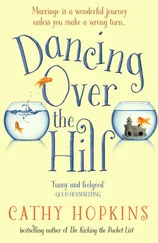So Faye is renting a small apartment close to the nursing home and each morning she walks over and spends the whole day with her father. Sometimes he recognizes her, but most of the time he doesn’t. He tells old ghost stories, or stories about the ChemStar factory, or stories of fishing the Norwegian Sea. And every once in a while he’ll see her and by the look on his face she understands that he’s really seeing Freya. And when this happens she soothes him and hugs him and tells him everything turned out well, and she describes the farm when he asks about it, and when she describes it she does so grandly — not just barley in the front yard but whole fields of wheat and sunflowers. He smiles. He’s picturing it. It makes him happy to hear this. It makes him happy when she says, “I forgive you. We all forgive you.”
“But why?”
“Because you’re a good man. You did the best you could.”
And it’s true. He did. He was a good man. As good a father as he could be. Faye had simply never seen it before. Sometimes we’re so wrapped up in our own story that we don’t see how we’re supporting characters in someone else’s.
So this is what she can do for him now, comfort him and keep him company and forgive and forgive and forgive. She cannot save his body or his mind, but she can lighten his soul.
They talk for a while and then he needs to nap, sometimes falling asleep mid-sentence. Faye reads while he sleeps, making her way once again through the collected poetry of Allen Ginsberg. And sometimes Samuel phones her, and when he does she’ll put the book away and answer his questions, all his big terrifying questions: Why did she leave Iowa? And college? And her husband? And her son? She tries to answer honestly and thoroughly, even though it’s frightening for her. It is literally the first time in her life she is not hiding some great piece of herself, and she feels so exposed that it’s close to panic. She has never before given herself over to anyone — she’d always parceled herself out little by little. This bit for Samuel, some small part for her father, barely anything for Henry. She’d never put all of herself in just one place. It felt too risky. Because her great and constant fear all these years was that if anyone ever came to know all of her — the real her, the true deep essential Faye — they would not find enough stuff there to love. Hers was not a soul large enough to nourish another.
But now she’s trusting Samuel with everything. She answers his questions. She holds nothing back. Even when her answers make the panic boil up within her — that Samuel will think she’s a terrible person, that he’ll stop calling — still she tells him the truth. And just when she thinks his interest in her must be exhausted, just when her answers prove that she’s a person unworthy of his love, what actually happens is quite the opposite. He seems more interested, calls more often. And sometimes he calls to talk — not about her ugly past but about how her day went, or about the weather, or the news. It makes her hope that someday soon they’ll be two people encountering each other sincerely, without the disfigurement of their history, minus all her immutable mistakes.
She’ll be patient. She knows she can’t force a thing like that. She’ll wait, and she’ll take care of her father, and she’ll answer her son’s many questions. And when Samuel wants to know her secrets, she’ll tell him her secrets. And when he wants to talk about the weather, she’ll talk about the weather. And when he wants to talk about the news, she’ll talk about the news. She flips on the television to see what’s happening in the world. Today it’s all about unemployment, global deleveraging, recession. People are panicked. Uncertainty is at an all-time high. A crisis is looming.
But Faye’s opinion is that sometimes a crisis is not really a crisis at all — just a new beginning. Because one thing she’s learned through all this is that if a new beginning is really new, it will feel like a crisis. Any real change should make you feel, at first, afraid.
If you’re not afraid of it, then it’s not real change.
So banks and governments are cleaning up their ledgers after years of abuse. Everyone owes too much, is the consensus, and we’re in for a few years of pain. But Faye thinks: Okay. That’s probably the way it ought to be. That’s the natural way of things. That’s how we’ll find our way back. This is what she’ll tell her son, if he asks. Eventually, all debts must be repaid.
THE EVENTS of 1968 described in this novel are a blend of historical facts, eyewitness interviews, and the author’s imagination, ignorance, and fancy. For example, Allen Ginsberg attended the Chicago protests, but he was not a visiting professor at Circle. And Circle did not have dorms in 1968. And the Behavioral Science Building wasn’t opened until 1969. And my depiction of the Grant Park protest does not follow the exact chronological order of things. And so on. For more historically accurate accounts of the ’68 protests, I would recommend the following, which were invaluable to me during the writing of this novel: Chicago ’68 by David Farber; The Whole World Is Watching by Todd Gitlin; Battleground Chicago by Frank Kusch; Miami and the Siege of Chicago by Norman Mailer; Chicago 10 directed by Brett Morgen; Telling It Like It Was: The Chicago Riots edited by Walter Schneir; and No One Was Killed by John Schultz.
In addition, I am indebted to the following books for helping me to portray the time period in (I hope) a convincing way: Make Love, Not War by David Allyn; Young, White, and Miserable by Wini Breines; Culture Against Man by Jules Henry; 1968 by Mark Kurlansky; Dream Time by Geoffrey O’Brien; and Shards of God by Ed Sanders.
Some of the words given to Allen Ginsberg in this book were written by him first in his essays and letters, collected in Deliberate Prose: Selected Essays 1952–1995 edited by Bill Morgan, and in Journals: Early Fifties Early Sixties edited by Gordon Ball.
For the great Norwegian ghost stories, I am indebted to Folktales of Norway edited by Reidar Christiansen and translated by Pat Shaw Iversen. The nix is the Germanic name given to a ghost that, in Norway, would actually be called the nøkk.
My information about panic attacks comes from Dying of Embarrassment by Barbara G. Markway et al. and Fearing Others by Ariel Stravynksi. For insights regarding desire and frustration, I am indebted to Missing Out: In Praise of the Unlived Life by Adam Phillips.
For his research on the psychology and behavior of MMORPG players, I am grateful to Nick Yee and his Daedalus Project. My thinking about the four kinds of challenges in video games was aided by Phil Co’s Level Design for Games. Pwnage’s various brain disorders came from Nicholas Carr’s blog Rough Type and the article “Microstructure Abnormalities in Adolescents with Internet Addiction Disorder” by Kai Yuan et al., published in PLoS ONE, June 2011.
Feminine hygiene ads in Faye’s home ec classroom are from the website Found in Mom’s Basement at pzrservices.typepad.com/vintageadvertising. Certain Laura Pottsdam details were plucked from a couple of amazing calls to the Savage Lovecast by Dan Savage. My description of the Molly Miller music video owes a debt to Andrew Darley’s Visual Digital Culture. Some information regarding Circle’s brutalist architecture comes from Andrew Bean’s Wesleyan University honors thesis, “The Unloved Campus: Evolution of Perceptions at the University of Illinois at Chicago.” The argument for a reproductive boycott is excerpted from an article in Ain’t I a Woman 3, no. 1 (1972). The letter to the editor that Faye reads in the Chicago Free Voice is excerpted from an unpublished letter to the Chicago Seed donated to the Chicago History Museum. Sebastian’s information about the maarr comes from Franca Tamisari’s “The Meaning of the Steps Is in Between: Dancing and the Curse of Compliments,” published in The Australian Journal of Anthropology, August 2000. Allen Ginsberg’s “Eat Mangoes!” story is from Teachings of Sri Ramakrishna.
Читать дальше












